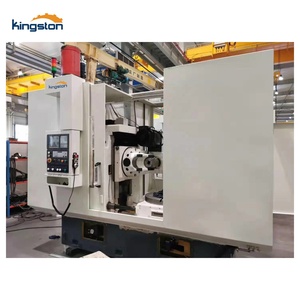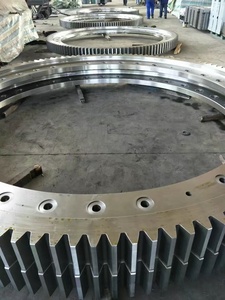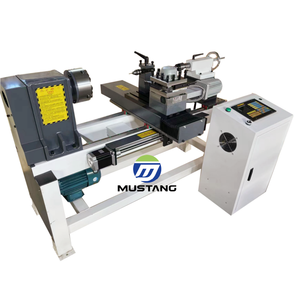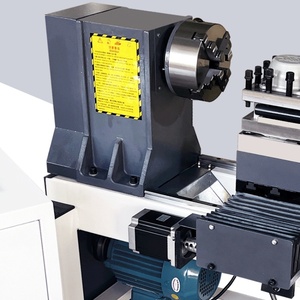
All categories
Featured selections
Trade Assurance
Buyer Central
Help Center
Get the app
Become a supplier

(912 products available)





















Market Overview: The global market for machine tools, including polygon turning machines, is projected to grow significantly, reaching approximately US$113.6 billion by 2030, up from US$81.4 billion in 2023, with a CAGR of 4.9% during this period, according to Global Industry Analysts. The lathe machines segment, crucial for polygon turning, is also expected to grow, with an estimated market size of US$15.4 billion by 2030, reflecting a CAGR of 3.2%. This growth is driven by the increasing demand for precision machining across various sectors, particularly in automotive and aerospace manufacturing, where polygon turning machines are essential for creating complex geometries with high accuracy.
Regional Insights: The U.S. market for machine tools was valued at $8.0 billion in 2023, while China is anticipated to lead with a remarkable growth rate of 5.4%, reaching $41.6 billion by 2030. These trends indicate a robust demand for polygon turning machines in both regions, driven by industrial expansion and technological advancements in CNC machining. Furthermore, consumer behavior is shifting towards automation and efficiency, with manufacturers increasingly adopting sophisticated turning technologies to enhance productivity. As the market evolves, addressing customer pain points, such as the need for skilled operators and the high cost of advanced machinery, will be vital for key players in the polygon turning machines segment to maintain competitive advantages and capture emerging niche markets.
A turning machine for polygonal shapes is a precision CNC lathe capable of machining polygonal profiles, mainly for the metalwork industry. Various models with distinct specifications and features exist to suit different needs and requirements;
These specifications are common features of polygonal turning machines.
Some of the many applications of the corner rounding machine for wood are as follows.
Woodworking and Carpentry
In the carpentry and woodworking industries, the wood roundover shaper creates decorative and functional edges on various wooden products. This includes furniture, stairs, moldings, doors, and window frames. The machine also improves the overall aesthetic quality of the finished product by flattening and rounding sharp corners to give wooden pieces a more polished and professional look.
Construction and Architectural Projects
In construction and architectural projects, the machine can be used to trim and shape wood components to achieve a precise fit. Among such components are door frames, window casings, and structural elements. The machine can also be used to make ergonomic handles and assemblies for cabinetry in architectural constructions.
Prototyping and Product Development
In the furniture-making industry and when crafting other wooden products, the wood shaper can be used during prototyping and product development to quickly create a test fit and prototype of a new product idea. It is easier and more efficient to use this machine than to rely on traditional hand tools. The wood shaper facilitates the very fast iteration and refinement of product designs with the use of this machine.
Mass Production and Automation
In large-scale woodworking operations, the CNC wood shaper is a versatile and efficient shaping tool. It streamlines the mass production of standardized wooden parts such as spindles, balusters, columns, and fine cabinetry. Its automation can also improve manufacturing's accuracy, consistency, and speed.
When investing in a polygon machining centre for business use, several crucial factors need consideration to ensure the chosen machine aligns with operational needs and produces desired outcomes efficiently.
Workpiece Requirements Analysis:
Firstly, it is vital to analyse the business's project needs and specifications. Determine the required capacity, such as the size and complexity of the polygons that will frequently be machined. It is essential to comprehend the existing material types and their applicable materials to ascertain compatibility. Moreover, precision requirements must be defined to establish the desired accuracy and tolerances for the final workpieces.
Machining Processes and Technologies:
Next, it is crucial to comprehend the various machining processes and technologies that different polygon machines offer. Research polygon milling machines and CNC polygon turning centers, among others, and understand their advantages and limitations. Consider the accuracy and efficiency of each technology as well as whether it is suitable for handling the required materials and shapes.
Machine Specifications:
After that, pay attention to important machine specifications. Examine factors such as spindle speed, cutting tools compatibility, automation capabilities, etc. Select a machine whose specifications suitably accommodate project needs and optimize machining efficiency.
Brand and Service Provider Selection:
Additionally, it is necessary to choose an appropriate machine brand and service provider. Invest time in researching reputable brands with positive user reviews and solid reputations. Furthermore, although the chosen machine may seem ideal, there is still a possibility of encountering problems during use. Therefore, ensure that the chosen equipment will receive prompt professional maintenance and technical support from the selected service provider.
Cost-effectiveness Analysis:
Finally, a comprehensive cost-effectiveness analysis must be done, taking into account the initial machine purchase cost and subsequent operating expenses, including maintenance fees and energy consumption costs. Select a machine that offers the most favorable cost performance in relation to the business's economic conditions and long-term development needs.
Q: What material does a polygon-turning machinework with?
A: It depends on the machine in question. Some machines can turn wood, while others will work better for metals such as steel, copper, aluminum, brass, titanium, etc. Either way, the material will come in the shape of a blank, which the machine will work on to create a finished product.
Q: Can the machine cut threads?
A: Yes, some polygonal lathes come with attachment or tooling options that allow them to cut threads, configure grooves, or even make hollow cuts internally. Such machines usually have CNC-based controls with G codes specifying the threading details.
Q: How does the operator know the part is done?
A: The operator does the initial setup and knows the part's dimensions. During the machining process, the operator looks at the part and measures it against the dimensions noted before starting. Some polygons will have counting functions in their CNC allowing the operator to know how many pieces are made and the exact part when adjustments are required.
Q: How many sides can the machine turn?
A: While some machines only work on polygons with up to 12 sides, others can turn even more than that. The efficiency of the machine is affected by the number of sides it can turn and the maximum diameter capacity and working length.